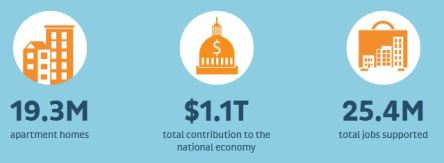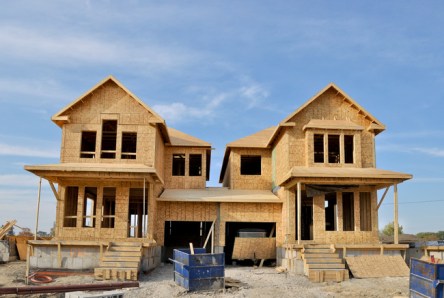Are we on the path back to the good old days of booming prosperity in real estate? Any step forward is a step in the right direction. Explore the top ten hottest metropolitan areas that are leading the surge in multifamily unit construction. Washington, D.C. The population rose by about 10 percent from 2000-2012. While job growth is a contributor, reverse sprawl has suburbanites returning to the city. A blend of Baby Boomers and Millennials are taking up residence downtown. These new tenants are drawn to the conveniences of pedestrian-friendly living. Dallas The city seems unstoppable. Dallas continues to be a leader in population growth, now estimated to grow at 345 people per day or nearly one person every four minutes. Jones Lang LaSalle suggests that the Dallas-Fort Worth population will reach 9 million people in the next 16 years. Job growth in the financial services sector attracts talent to the city. Houston Houston welcomes more than 302 people per day. Like Dallas, Houston residents are drawn to the city’s job growth in the private sector. Dallas and Houston have been economic powerhouses throughout the new millennium. Los Angeles Interestingly enough, LA is losing ground in its trademark markets. The city doesn’t boast much in terms of job growth, either. New construction is an optimistic risk but developers are taking the leap. If we build stunning, eye-popping high-rises, they will come. San Francisco The city suffered from a 10.1 percent unemployment rate in 2010. By the close of 2013, unemployment dropped to nearly 5 percent. Job growth has revitalized the city so that it is bursting at the seams. A lack of competition has led to some of highest rents in the nation. As far as apartments for rent in San Francisco go, new...
A Big Impact
Apartments and the economy
They’re the housing option of choice for millions of Americans, and have gained both development momentum and resident popularity over the last five years. But apartments are not just a roof over our heads at night. They are businesses that provide a major contribution to the U.S. economy. as illustrated by this infographic from the National Apartment Association and National Multifamily Housing Council. WeAreApartments.org offers you the chance to measure the economic impact of an apartment community of any size in any U.S. state. Simply navigate to http://weareapartments.org/calculator/search and enter a few basic points of information, and you can find out how much the apartment community you own or manage contributes to the community – both in operations and thanks to the residents who live there. For a broader view of the Trillion Dollar Apartment Industry, check out this infographic: Source: http://weareapartments.org/ ...
Cost of Living Calculator...
HUD + DOT Make Relocation Easier
Relocating can be tough for tenants, particularly when they are moving to a new city or state. To ease the transition, The Department of Transportation and U.S. Department of Housing and Urban Development have created the Location Affordability Portal (LAP), a website equipped with tools that give a realistic idea of the costs associated with relocating to a different area. The portal also includes a variety of features that are useful to real estate and development professionals. The joint venture of HUD and the DOT came as a result of interesting findings: the average family spends nearly 50 percent on its income on housing and transportation. While housing costs are traditionally easy to calculate, transportation costs are not. By compiling user-entered information along with each department’s collected data, an easy-to-use portal has taken shape. Users now have access to a vast amount of national data. Users can simply type in the address of a residence and receive the calculation for housing and transportation costs. Families can determine whether it’s better to live and work in the city, live in the suburbs and commute to the city, or any other variation of housing and transportation options. Such a resource would have been incredibly helpful for Jeff Ratchford of Conyers, GA. He knew that he didn’t want to live in the city. He opted to live in a suburban community and commute to his workplace. By using public transportation, he received the best combination of what he wanted: a spacious home for his family at a great price, an acre lot, good schools, a peaceful neighborhood and an inexpensive commute. “We found the home and lot that we wanted and we were right where we wanted to be,” he recalls. For the first few years, Ratchford...
The Top 10
Issues for Real Estate Right Now
The Counselors of Real Estate annual list of the top 10 issues to affect real estate, unveiled during the National Association of Real Estate Editors conference in early June, encapsulated some of the most critical issues to emerge in recent months. And while some longer-term concerns emerged on this list, derived from surveys and polls of members of this invitation-only top-executive industry think tank, the fact that they were not included in last year’s version suggests a heightened focus in response to global political and economic conditions. The organization emphasized the importance of considering both the opportunities and risks inherent in these issues not only on an individual basis but when taken in combination. The trends as identified are as follows: Low interest and capitalization rate risks. Healthcare Capital markets resurgence Event risks Effects of climate change/weather on coastal properties Echo Boomer housing demand Increased U.S. natural gas mining and reserves Global real estate growth and risk Impact of technology on office space Retail malaise and repositioning In discussing the list in Letterman-style reverse order during his keynote presentation , Counselors of Real Estate chairman Howard Gelbtuch offered some key observations. He dismissed the so-called retail malaise with the response: “What malaise?” While much has been made of the Internet’s increasing attraction of shoppers, he still sees value in the social aspects of mall shopping. And with retail rents healthy, investors and managers can really benefit from purchasing and retenanting spaces currently occupied by what he termed the “dowdiest retailers,” such as Sears/Kmart and JC Penney. Their average contracted rent is $4 per square foot, versus an average market rent of at least $8 if not as much as $11 per square foot, he said. The hottest markets, meanwhile, are sporting rents at...
Multifamily Growth
Outperforming the Recession
Renter households increased from 34.1 percent in 2009 to 35.4 percent in 2011 according to a recent report released by the U.S. Census Bureau. A consistent pattern may be observed countrywide, with nearly a quarter of the metro areas seeing a rise in renting households, while less than 3.0 percent of the nation’s metro areas saw a decline. Continued urban population growth combined with a healthy job market and a change in occupant mindset has sparked the creation of a vigorous multifamily sector which has now become the engine behind the recovery of the real estate industry. The desire to retain mobility to pursue employment opportunities as well as a preference for urban lifestyles among many households is expected to support strong operations in the apartment market throughout 2013. A recent American Community Survey brief permitted the comparison of all 366 metro areas in the U.S. based on four characteristics of the rental housing stock: gross rent, gross rent as a percentage of household income, rental vacancy rates, and renter share of total households. The study found that the rental vacancy rates for the nation declined from 8.4 percent in 2009 to 8.2 percent in 2010 to 7.4 percent in 2011, indicating a tightening rental market. Nationwide, more than 2 in 5 renter households (44.3 percent) had housing costs that consumed 35 percent or more of their income. “While we saw a decrease in rental vacancy rates and pricing in some areas, the burden of rental costs on households increased across many parts of the nation,” said Arthur Cresce, assistant division chief for housing characteristics at the Census Bureau. “Factors such as supply and demand for rental housing and local economic conditions play an important role in helping to explain these relationships.” Only 11...





